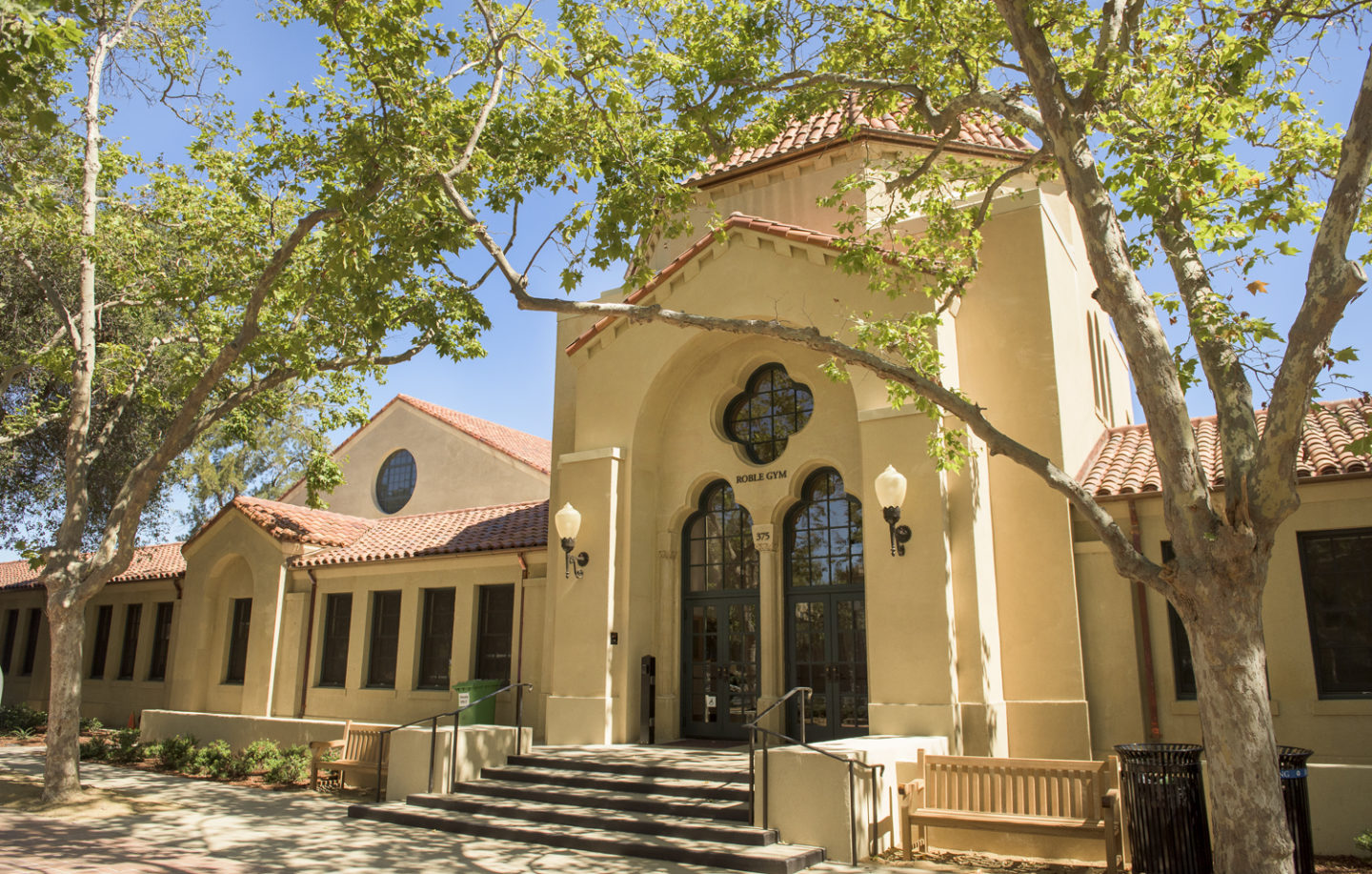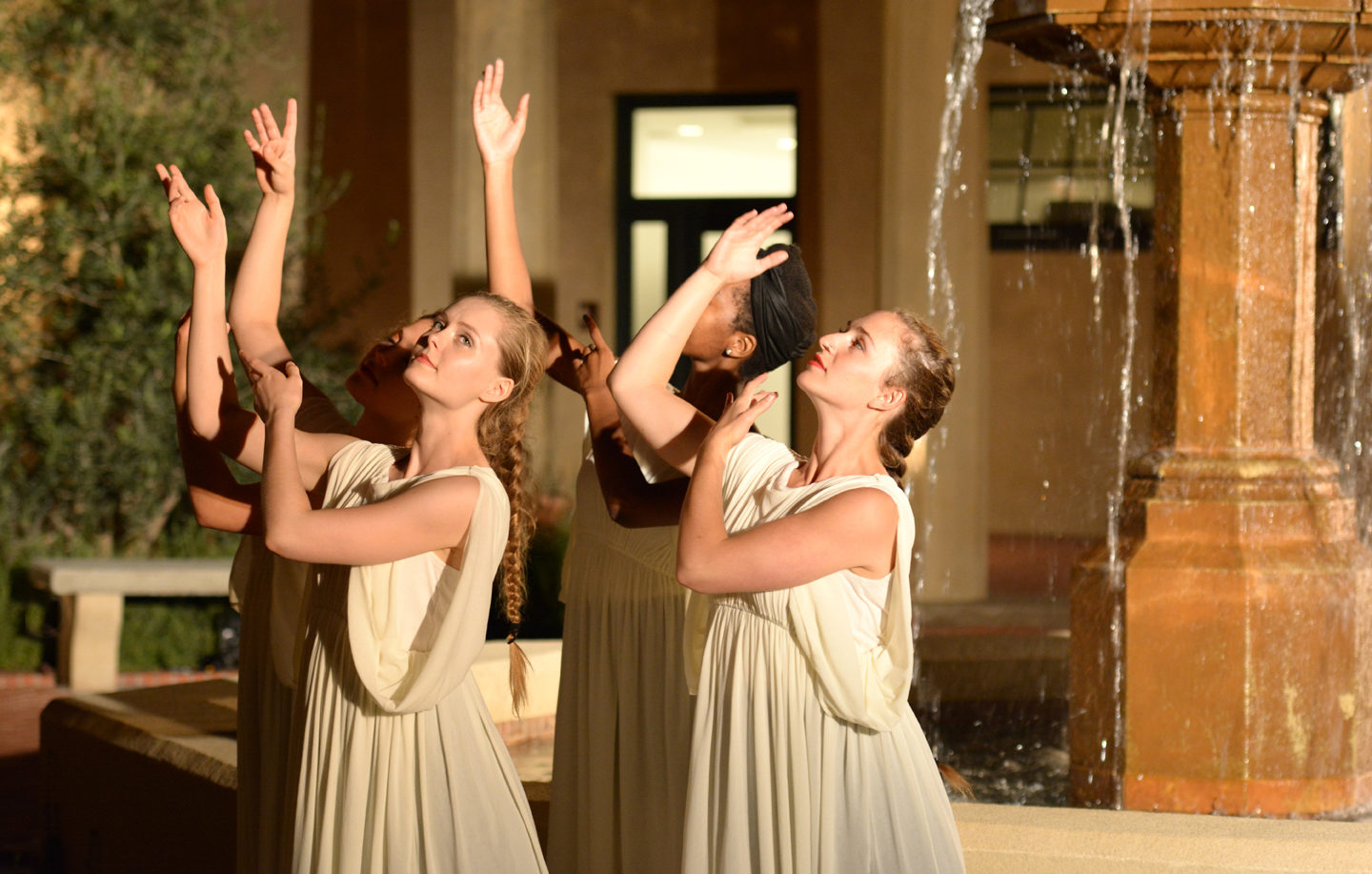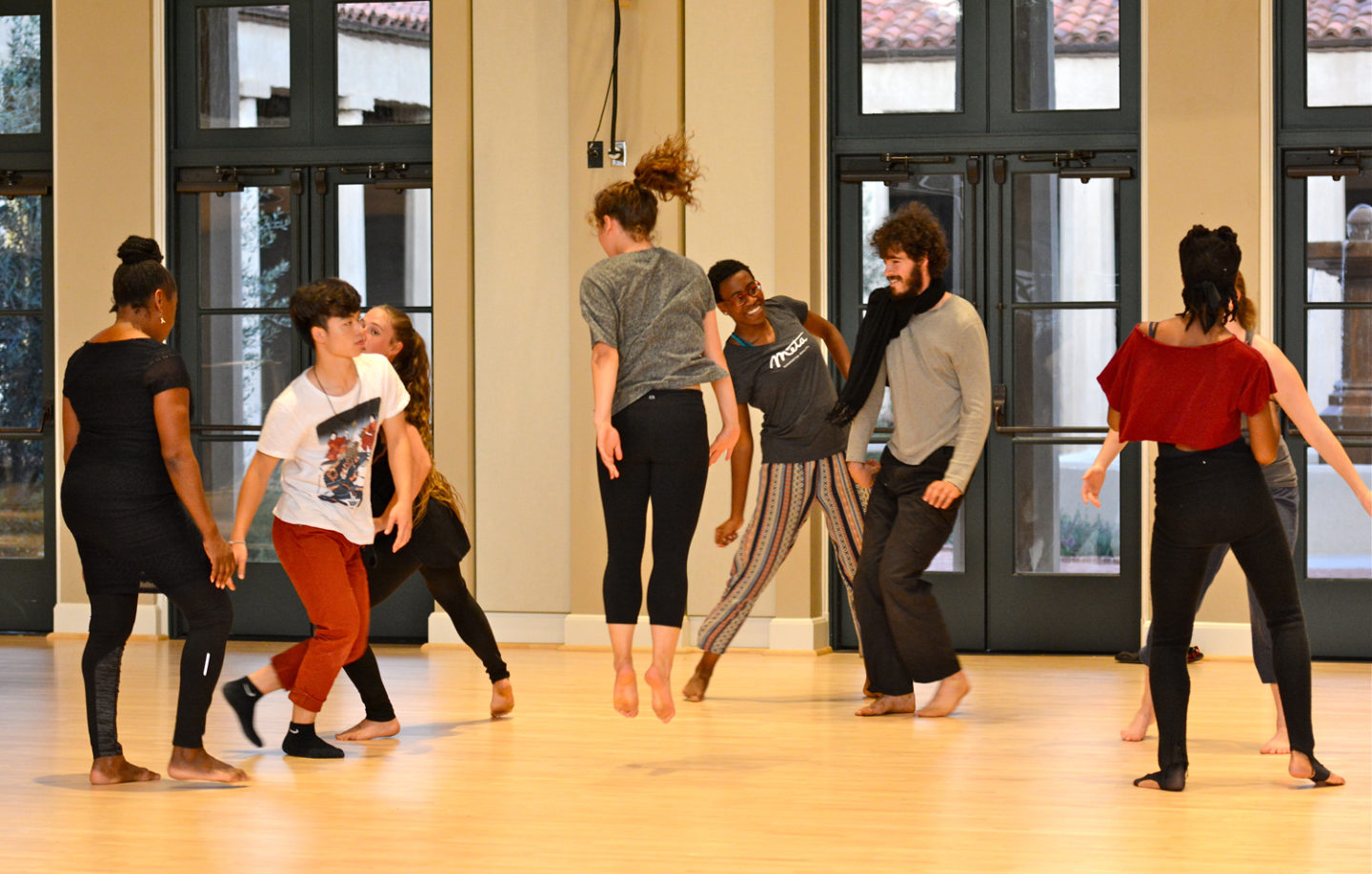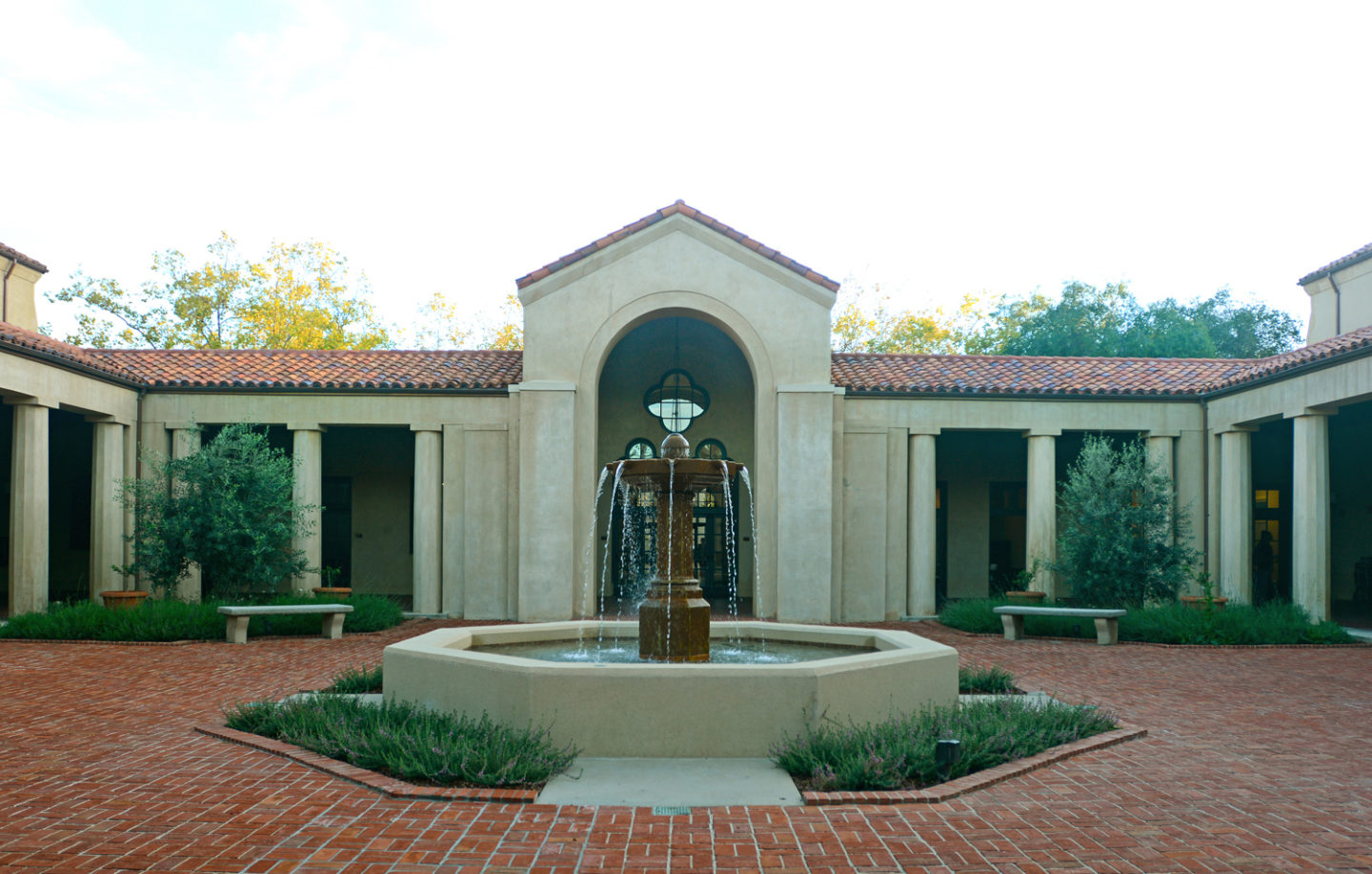A 75-year-old Stanford building reopens with upgrades that adapt its charm to new generations, new art forms and new ways of collaborating
Opened in 1931 to serve Stanford women, Roble Gymnasium quickly became beloved on campus for its Mediterranean ambiance, its fountained interior courtyard and the natural light from its enormous windows.
A $28 million renovation completed in summer 2016 preserves this serenity while modernizing the building (which has long been coeducational) and upgrading its performance spaces. Stanford’s Department of Theater and Performance Studies (TAPS) is headquartered there.
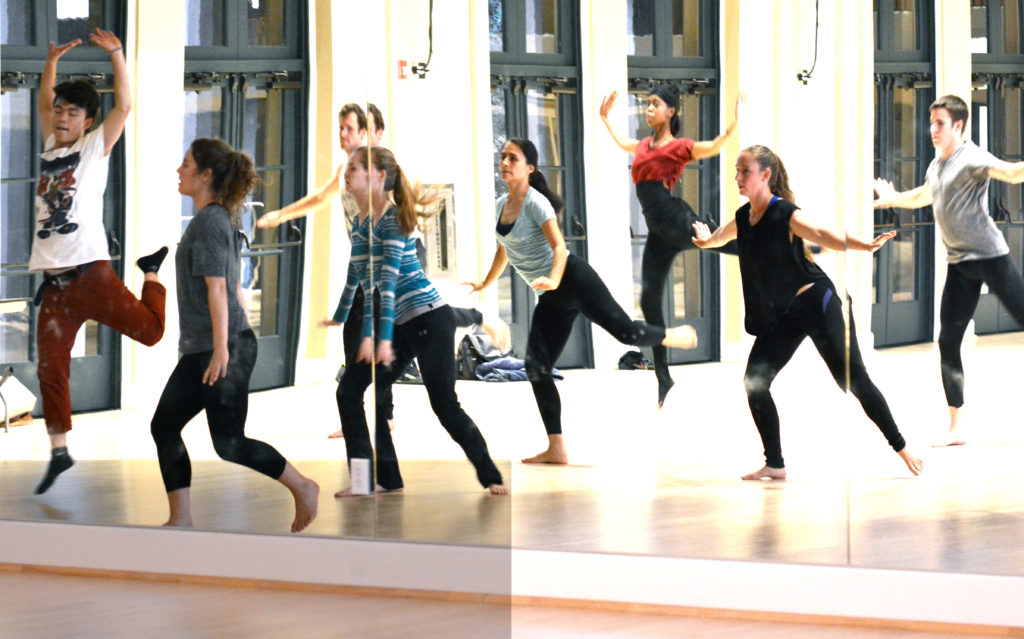
A striking addition is the Roble Arts Gym, a multidisciplinary space with a music studio and recording booth, a rehearsal room and a “messy art space” where students can paint and sculpt.
Carved from Roble’s former locker room, the Arts Gym is open to all students irrespective of academic program. It supports Stanford’s undergraduate breadth requirement in creative expression and furthers Stanford’s goal of integrating the arts into student life.
TAPS celebrates Roble’s reopening in fall 2016 with events including a production of Spring Awakening: The Musical, directed by Vice Provost for Undergraduate Education Harry Elam; a site-specific dance piece Nov. 9, choreographed by instructor Aleta Hayes, ’91, for the Chocolate Heads Movement Band; and a Festschrift, or tribute book, to the dance teachers, learners and innovators who have made Roble their artistic home for 75 years.
Roble is a safe space, where creation is more important than competition.
—Ben Cohn, ’13, MS ’14
Roble’s original function was to foster rejuvenation and health for Stanford women in the days before women’s intercollegiate sports. In those days, women’s athletic programs were geared toward relaxation and a well-rounded life, not high-level competition. At Roble, Stanford women could learn badminton, fencing, tennis and other sports in the modesty of an all-female environment.
To make sure the male gaze was absent, a high fence ringed the women-only pool where the Roble Parking Structure is under construction now.
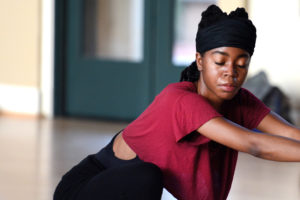
Roble Gym also had medical offices. Stanford women went there for treatment including minor surgery, sheathed from male eyes save those of Jupy, medical adviser Dr. Bertha Dyment’s 140-pound Great Dane.
Dance at Roble had rigor from the start. For decades, modern dance was under the purview of the Department of Women’s Athletics, and Stanford women performed their “dance dramas” at intercollegiate events up and down the West Coast. A dance major program operated out of Roble from 1937 to 1961.
Later, faculty practitioner/scholars such as Susan Cashion and residencies by such legends as activist and choreographer Katherine Dunham helped connect dance at Stanford to a larger cultural continuum. They helped students see dance as a medium of cultural preservation, intellectual inquiry and self-fashioning.
Roble’s serenity continues to inspire dancers and choreographers.
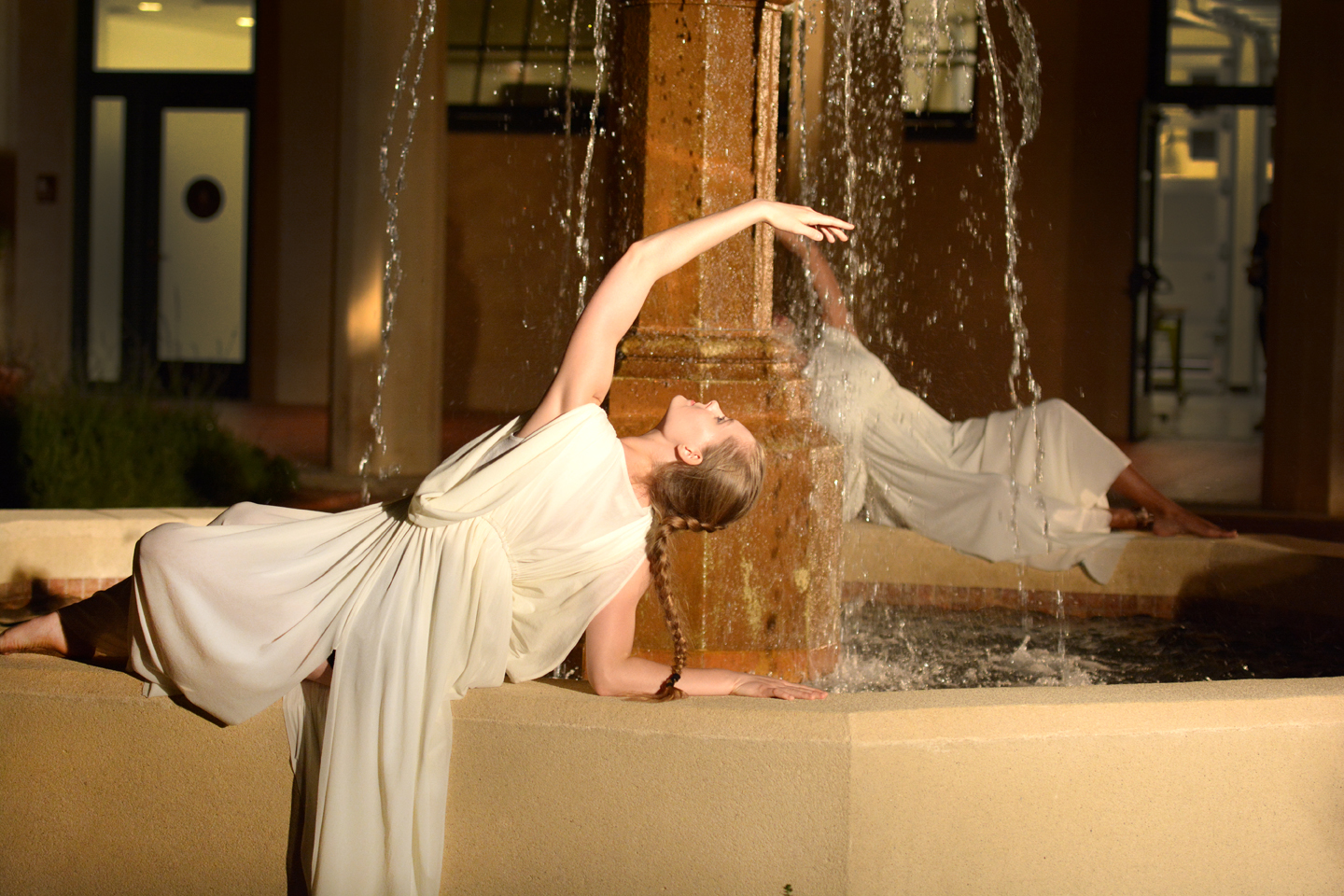
“My favorite space in the renovated Roble Gym certainly has to be the courtyard, on a clear night with the moon full, looking into the lit-up dance rooms watching rehearsals,” dancer Ben Cohn, ’13, MS ’14, told the Stanford News Service.
“It reminds me of an Oxford-like cloister that allows for peace, focus and intrinsic enjoyment of one’s art.
“Roble is a safe space, where creation is more important than competition.”
Watch video and learn more about Spring Awakening, an adaptation of an 1891 play that shocked Victorian audiences with its coming-of-age themes.
Learn more about the history of dance at Roble and at Stanford.
Explore a timeline of all the arts at Stanford.







